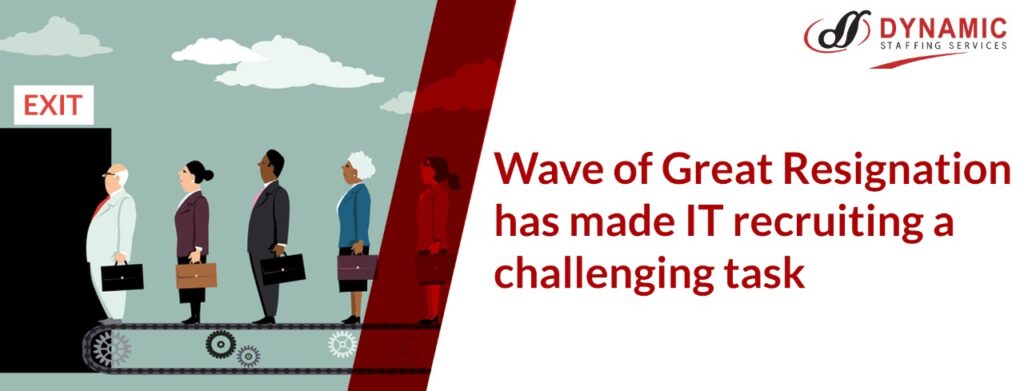The pandemic has impacted the business world. Everyone has been on a ride for the past few years, and things are still abnormal. We have witnessed the aftermath of the pandemic, from Great Resignation to inflation-based measures and long-term freezing recruitments. The scope of these changes refers to two major things. First, the interruptions in the business world go impactful and deep; second, the speed at which interruptions happen mandates flexibility and analysis.
Human resources (HR) departments have been among the first to devise responses amid sudden shifts. 2023 presents a chance to stabilize and firmly establish various new practices. Let’s examine the HR developments that will impact this year.
Next Level Business Planning
Companies faced multiple interruptions in business during the pandemic, so business planning has taken a break in the market. However, business leaders were confident enough to face business interruptions but were hindered by their timetables. As you know, major interruptions bring certain situations, so changes never happen in a vacuum.
Some of the fast-paced changes were excellent. For example, quick digitization brought the patterns of time three to four years into the future. Others were simply chaotic, though. Employees had all the cards on the table after the Great Resignation. The previous pattern was stopped as it deteriorated.
The HR professionals need to take up their business planning to a new level together in 2023 because, at the moment, even a small incident can lead to a domino effect. They can plan for the upcoming best and worst-case situations using the data provided by modern technology. The concept of planning ahead is that HR professionals can be prepared for all surprises of the shifts in the trend.
Additional Read: HR Teams are Sought after Talent Strategies for Long-Term Impact
Availing Modern Automation & Tools
In 2023, HR departments can benefit greatly from using contemporary HR tools that can be used for various duties, including reviewing job applications and managing employee engagement and performance. In addition to assisting with difficult tasks, they can spot and outline patterns in a flash.
Furthermore, these tools will assist you in overcoming two difficulties. The first benefit of using cloud-based tools is that your internal IT staff and infrastructure are less stressed. If the HR department experiences a rapid employee turnover, you can transfer the workload to another person.
Keeping Employee Well-Being on Priority
The precedence you give to employee well-being should significantly increase if it isn’t already there. Even though the Great Resignation and its patterns were top stories, its effects are still being felt. An imprint has been left on companies and employees due to the abrupt shifts that occurred—making workers the primary concern and then abruptly grinding hiring to a halt.
The things learned over the past few years include work-life balance, examining performance management’s potential, and developing an excellent employee experience. However, while the newest trends are the biggest news for office workers, they frequently take a sharp turn when applied to deskless employees. Because of the nature of their duties, these individuals must be present, and working remotely is not an option in their case.
With health and safety as the top priorities, these workers’ well-being has a distinct agenda. It’s not necessary to end there, though, in ensuring the welfare of the deskless workforce. Potential benefits could make up for the inability to offer remote work and other well-liked post-COVID-19 benefits, such as flexibility with hours and scheduling, upskilling chances, and customized career paths.
All elements mentioned above, with retention as the common constant, significantly contribute to HR trends. Recent events may have stopped job-hopping, but the trends discussed here are probably not going away anytime soon.
Setting up a New Workplace Model
There won’t be any similarities between the workplaces of 2020 and 2023. Opponents are pushing for a return to normal before 2020 and even more flexibility. Working remotely and in a hybrid mode is no longer popular. Arguments firmly rooted in the past few years’ events have the potential to undermine any case for a complete return to the workplace, and those who support it are waging an already lost war.
The workplace ecosystem that HR experts design must be able to support the requirements of the workplace model in their organizations. They must consider both completely remote and deskless workers and everyone in between.
Additionally, workplace systems must be able to shift smoothly and with few bumps to either side of the continuum. Tailoring such a system from the ground up will require diligent work and teamwork across several departments.
Nearly every business today is a tech firm, thanks to digitization and technological advancements. Blue-collar workers now have a huge chance to digitize portions of their workflows and join the next industrial revolution thanks to this technology.
Additional Read: Tips on Working with a Recruiter.
Employee Training for Upcoming Changes
Although the outlined trends may seem intimidating, they are essential because employees are a company’s most valuable commodity. HR professionals must find strategies to handle unresolved problems as we transition into a trend of slower recruitment and job hopping. One of these problems is the existence of skill gaps in businesses brought about by fewer job opportunities to fill those gaps.
Another problem is that many positions were filled by people who didn’t have the necessary skills but were offered the chance to pick them up along the way. One way to fix this problem is through job shadowing and mentoring. An additional option that has produced outstanding outcomes in some industries is in-house and workplace training.
The training for maintenance duties is not the only type available. As was previously stated, many manual jobs are becoming partially digital due to technological advancements. It needs to be taken into account when developing new skills.
Different Internet of Things (IoT) applications in the janitorial industry offer the job more screen time. Future stewards may perform more computer labor than manual inspections, which is an easy assumption.
Wrapping Up
We tried our best to explain these five significant recruitment trends in 2023. We hope the blog was helpful and that you will consider these trends to implement in your organization in the coming future for the growth and betterment of the company.
Follow the most recent trends, news, and job updates by subscribing to our newsletter. Contact us at +91-11-40410000 or enquiry@dss-hr.com for any concerns regarding our services.





